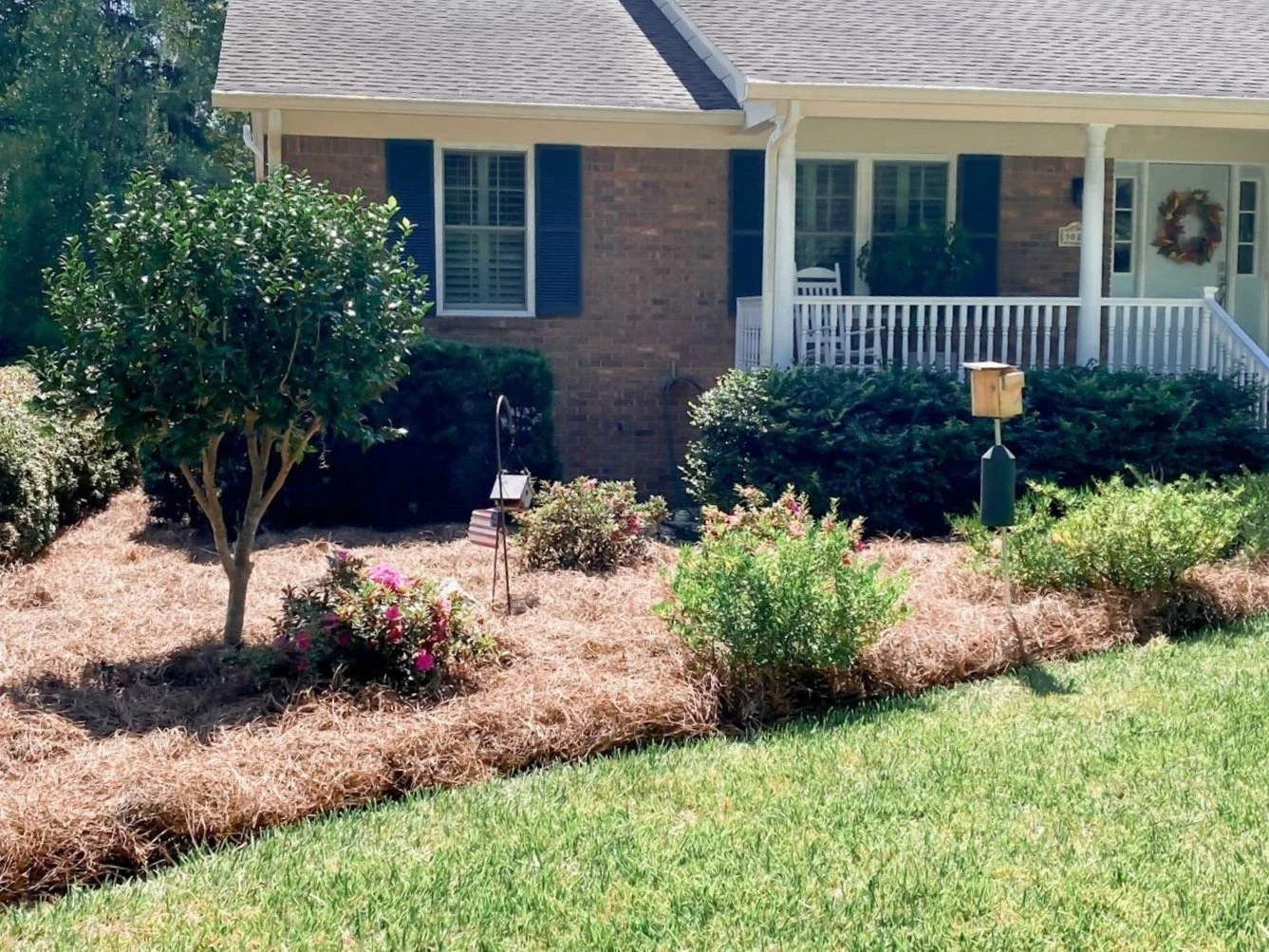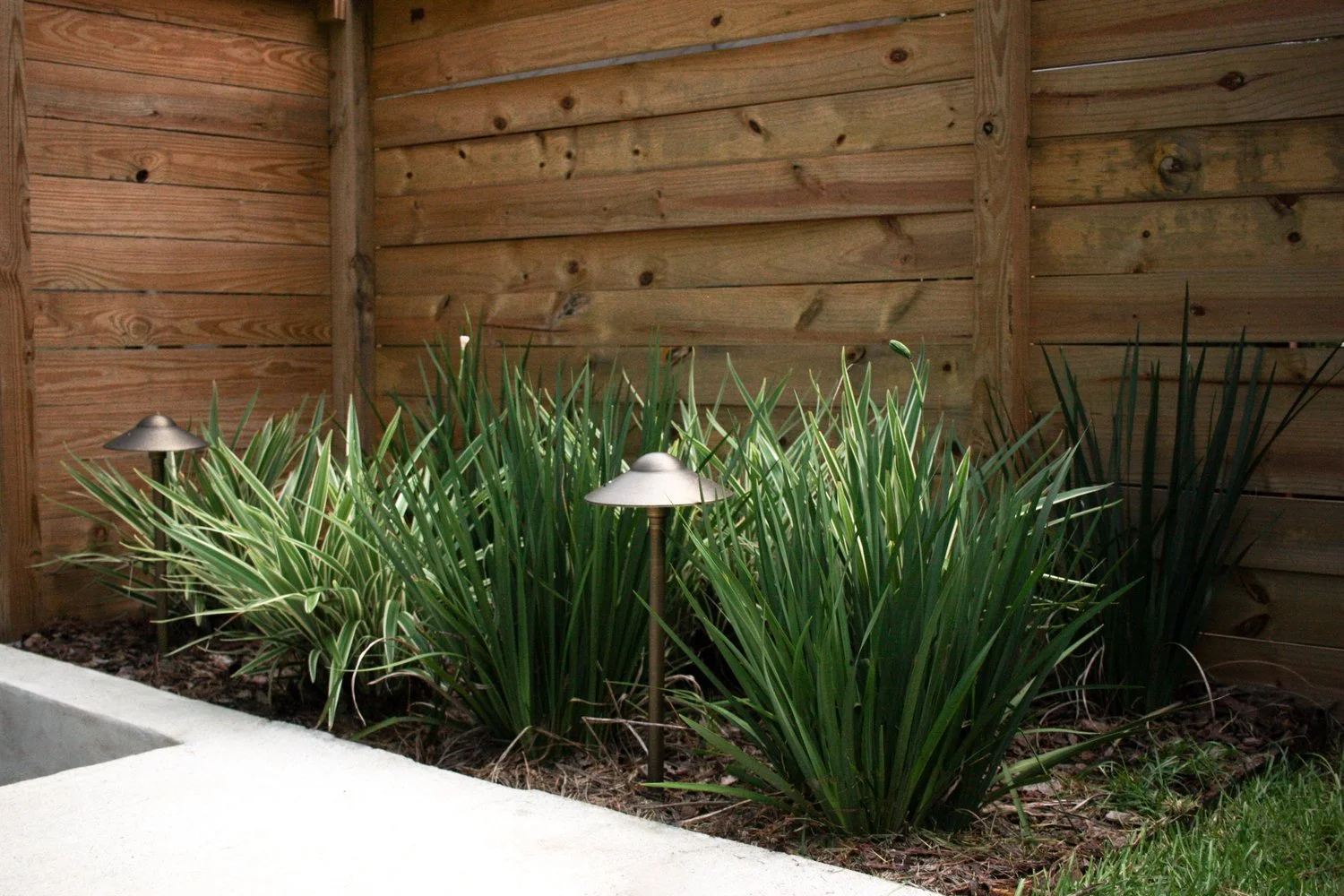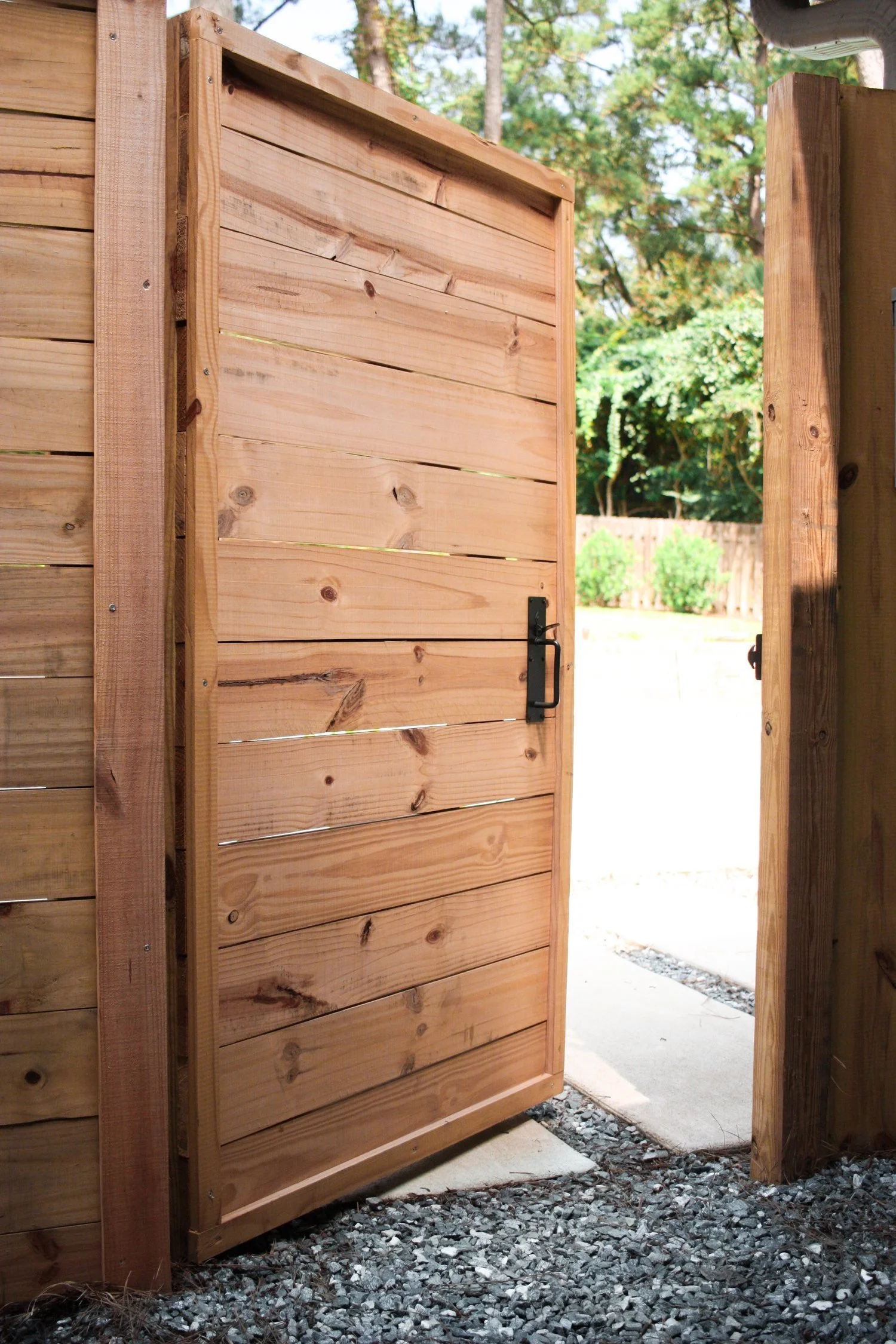Mulch.
Tallahassee’s most common mulching choice: Long Leaf Pine Straw
Five times out of ten that I recommend mulch to a customer in Tallahassee, the response is something like, “we much prefer pine straw or pine bark, would we have to do mulch?” My answer is always…
Anything can be “Mulch.”
Here in the southeast, “mulch” is often used synonymously with wood chips. That is not quite right: mulch is any material that you put on top of soil. Wood chips, pine bark, pine straw, etc are all common options for mulching. If you took 1,000 banana peels and covered all your soil with them, you would be mulching with banana peel mulch.
4 Reasons for Mulching
There are four reasons for laying mulch, and they should all be taken into account when deciding the best mulch material for your use.
1. Mulch solves water problems for leaves, soil, and roots:
When water hits soil directly, it puddles, splashes, and gets on the underside of plant leaves. This splashing makes the plant susceptible to a number of diseases and can cause plant health issues over time. Mulch prevents this from happening by absorbing the water’s impact, essentially becoming a splash guard for your plants.
After watering has stopped, water on bare soil is quick to evaporate. On hot days, it will most definitely evaporate before the roots of your plants can drink it up. Mulch creates an umbrella for the soil; the water hides underneath the mulch and evaporates much more slowly, allowing it to sink down into the soil and get sipped up by plant roots.
Southeastern soils are often clay-heavy and hold water for too long. This can cause chlorosis, a condition where the roots of plants drown and rot. The best solution for clay soil is mulching with organic material. Over time organic material breaks down and incorporates into the native soil resulting in rich, well-draining, loamy goodness.2. Mulch suppresses weeds.
While there is no way to completely suppress weeds (not even weed fabric), thickly laid mulch does shade out weed seeds and seedlings. The thicker and more frequently you lay mulch, the more effective it will be as a weed blocker.3. Mulch improves soil structure.
As mulch breaks down and is integrated into the native soil by worms, bugs, and microorganisms, it aerates the soil, improving its drainage and ability to take on nutrients. Depending on the material you use, it will bring its own nutrients to the soil’s composition. The more it breaks down the more it will contribute to the health and structure, and the happier your plants will be.4. Mulch is a key aesthetic component of your garden.
Mulch is not the star of your garden, but it is the backdrop. Mulch should function as a consistent, neutral canvas that allows the different colors, textures, and shapes of your plants to spring forward. (This is the biggest reason that red mulch is a bad idea).
Our favorite mulch is pine bark mini nuggets. The darker color brings a complementary contrast to almost any planting. It retains structure longer and needs to be refreshed at half the rate of long leaf straw.
Synthetic Mulch
The worst mulch is no mulch at all. The second worst mulch is any synthetic material. Rubber mulch, plastic mulch, etc. all serve to save you time and money by not requiring frequent replacement. While they will suppress weeds, they will not sufficiently resolve water problems, they won’t improve soil structure over time, and they tend to stick out in a landscape rather than make a nice backdrop for your plantings.
A Note on Gravel…
Mulching with stone is not the best for water retention, because the gravel heats up quickly and speeds up the evaporative process. However, this is only a bad thing for garden areas that need damp soil. In fact, gravel is the ideal mulch for drought tolerant beds with plants like agaves, cacti, yuccas, alpines, succulents, etc. While stone is good for erosion control in some cases, keep in mind that stone can wash away. If you want to use stone to slow down water flow on your property, ensure that you choose stone that is large enough to handle the flow of water. This is best determined by someone who has experience with erosion control methods (i.e. an experienced landscaper).




